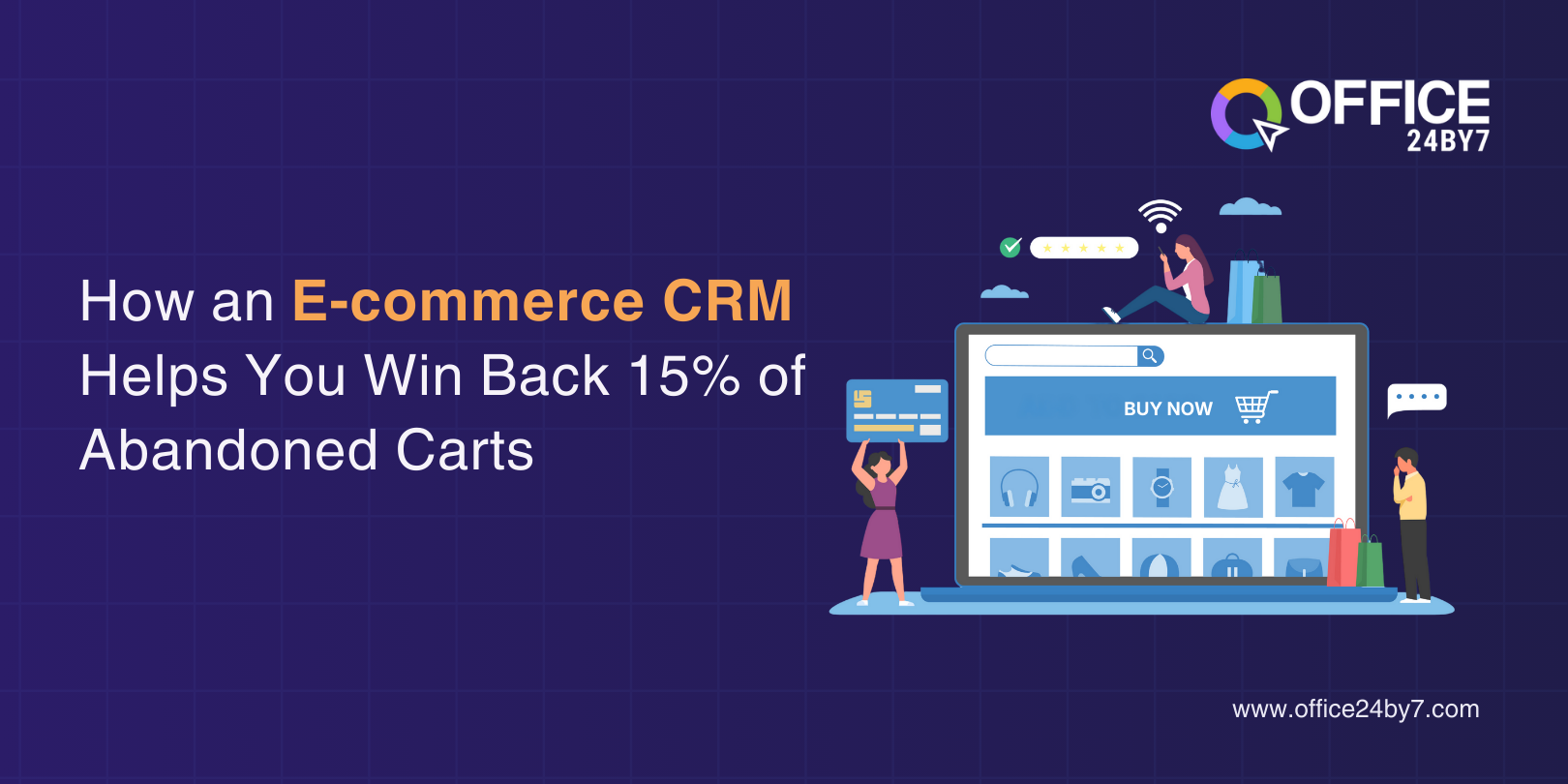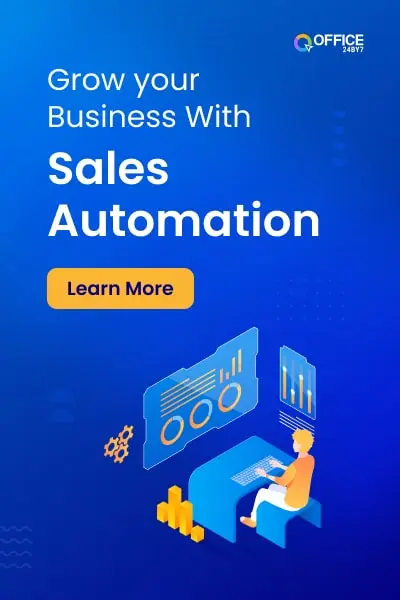Are you one of those passionate people looking to make fancy deal closures and be the boss of the game? Then you are in the right place. To become a great salesperson you need to understand what the different types of sales leads are, how they are created, and how to convert them effectively. Whether you’re a seasoned sales professional or just starting, all you need to know about different types of sales leads is here.
From cold leads to hot prospects, we’ll explore the spectrum of potential customers and how to approach each category. We’ll dive into the different sources of leads, from traditional advertising to cutting-edge digital marketing techniques. By the end of this post, you’ll have a comprehensive understanding of the lead landscape.
Knowing how to identify, nurture, and convert leads is essential for sustainable growth. We’ll provide you with practical tips and strategies to optimize your lead-generation efforts and boost your sales performance.
What are Sales Leads?
A lead is a potential customer or a customer who has shown interest in your company’s product or services but has yet to make the purchase. This interest could have developed in a large number of ways. Sales leads are individuals that you target to create a deal. Leads are the smallest unit of a deal making them the lifeline of sales and marketing teams. The marketing team creates them through various marketing campaigns like website leads, SEO leads, PPC leads, email marketing leads, advertisement leads, social media leads, outbound leads, inbound leads, and referrals.
There are different classifications of leads depending on their levels of interest and stage in the sales funnel which we will be discussing in detail in the coming sections.
Feel the power of a CRM Software!

7 Main Types of Sales Leads
You can classify sales leads into 7 main types based on the traditional conventions. This classification is done based on their readiness to buy, the level of qualification they get from the sales team and other characteristics.
Cold Leads
Cold leads encompass those potential customers who have little or no prior engagement with your business or brand. They are total strangers who may or may not need your product or service. This makes them most difficult to convert. Even if you expect them to have requirements they might not be ready for a purchase thus making them difficult to convert.
Cold leads are generated through methods like cold calling, cold emailing, and lead generation campaigns. A significant challenge with cold sales leads is making them feel comfortable and ensuring their trust in your brand. This calls for strategic sales communication to generate the requirement and then build trust. Converting cold leads is a time-consuming process. You cannot rush into making a deal out of them because they might back off from it. After all, they are not convinced enough about the deal. To deal with them you need to put them through your sales funnel where you will work with the marketing team to allure them to think about a deal and then use your skills to close it. Even so cold leads are the top opportunities for businesses.
You may want to use these steps to engage with them:
- Identify who they are and what they do
- Identify their pain points and needs.
- Tailor your product or service so they feel you can address their concerns.
- Engage with them via multiple channels (calls, email, social media).
- Provide exciting incentives such as discounts or free trials.
- Maintain back-to-back follow-ups and adjust your strategies based on feedback.
- Build trust through transparency and value demonstration.
- Guide them gradually and slowly towards conversion by ensuring they are ready for each upcoming stage.
- Closing the deal when the time is right.
Warm Leads
Warm leads are the best sources of deals. They are sales leads who have previously heard or interacted with your brand through any channels. Unline the cold leads who are total strangers warm leads may have seen your social media post or ad, or might have visited your website and checked the services that you offer.
They would be more interested in communicating with you making them an easier target to process through the sales funnel. Even though they are better than cold leads, you would still have to be proactive to close some deals.
You may want to use these steps to engage with them:
- Acknowledge previous interactions and establish a relationship.
- Continue to provide valuable information that resonates with their particular interests.
- Offer personalized solutions that align with pain points and preferences.
- Share success stories that create a sense of belief in the product.
- Maintain regular communication to keep the momentum going.
- Listen actively to their feedback and address any concerns promptly.
- Guide them gradually and slowly towards conversion by rigorous qualification.
- Closing the deal when the time is right.
Hot Leads
Hot leads are potential customers who have shown strong interest in your product or service. Not only that they are ready to make the purchase making it a bit easier on the persuasion part of it. These people might be the decision-makers who would influence the purchase. These people have either directly interacted with sales teams, requested detailed information through an email or a lead form, or actively engaged with marketing materials just like the way you would want them to. These are the people whom you would want to give top priority because they are most likely to close the deal.
You may want to use these steps to engage with them:
- Nurture them with focused attention and customized solutions so that you have all of their attention.
- Allow them to have direct communication with sales or support teams.
- Provide them with relevant resources or materials that manipulate their decision-making process.
- Expect objections and dive into these because once you are able to come out of it you will have earned their trust.

Related Reading
The following four types of sales leads are determined based on their qualification stage in the funnel and readiness for sales engagement.
Information Qualified Leads (IQLs)
An information qualified͏ lead (IQL) is an individual who is in the early stages of the buying process. They express interest by seeking additional information, usually in exchange for their contact details. They commonly use free resources such as blogs, eBooks, and case studies or register for ͏free webinars. This initial interaction indicates a curiosity or need, but not a definite intention to make a purchase͏. These are sales leads whom you can expect to be window shoppers. But this does not ensure that they might not be the decision-makers. So you may want to use these steps to engage with them:
- Carefully research their interests in learning more about your company and provide a clear understanding of the value you offer.
- Maintain communication via emails and newsletters to keep them engaged.
- Provide them with relevant and educational content, gently guiding them towards becoming more qualified leads, such as Marketing qualified leads (MQLs) or Sales qualified leads (SQLs).
- Expect objections and dive into these because once you can come out of it you will have earned their trust.
Marekting Qualified Leads (MQLs)
A marketing qualified lead (MQL) is a potential customer who meets marketing lead qualities. These qualities might be different from those expected from sales teams. These are people who have shown interest in a company’s products or services by engaging with the marketing content. These sales leads are a step closer to the purchase than IQLs and typically interact with your product or services through activities such as watching your videos, downloading case studies, engaging with marketing ads or PPC content, etc. The challenge with MQLs lies in nurturing these leads with targeted marketing to move them closer to making a purchase. As a sales agent, you might find difficulty with these sales leads because if the marketing team provides 50 MQLs you may have chances when you end up with 10 sales-qualified leads or more if you’re lucky.
Here is how you may convert these leads:
- Identify their pain points and needs.
- Tailor your approach so they feel you can address their concerns.
- Engage with them via multiple channels (calls, email, social media).
- Provide exciting incentives such as discounts or free trials.
- Maintain back-to-back follow-ups and adjust your strategies based on feedback.
- Guide them gradually and slowly towards conversion by ensuring they are ready for each upcoming stage.
Product Qualified Leads (PQLs)
Product qualified leads (PQL) are sales leads who have used your product previously and are ready to make a purchase. They might have used your product in a free trial or might have watched your product demo which means they know a little about how your product works and how it can be valuable.
You may want to use these steps to engage with them:
- Surprise them by offering personalized demos or trials.
- Provide educational content relevant to their needs and your solution.
- Use analytics to identify how they prefer to communicate with your brand to tailor your further outreach.
- Align the sales team to be ready to provide more specific information about your product and face any objections.
Sales Qualified Leads (SQLs)
A sales qualified lead is a lead who has been identified as ready for direct sales engagement. This is done by evaluating them based on various criteria. Some of these criteria are BANT, CHAMP, MEDDIC, GPCTBA/C&I. etc. Key constraints that are included in all of these qualification processes are their budget, authority, need, and timing. SQLs are usually at a more advanced stage in the buyer’s journey. Since they meet their required qualifications you can expect them to close deals sooner.
Sales qualified leads are hot sales leads, so the tactics you should use to convert them will look the same as with hot leads. But it is important to remember the focus with SQLs should be to close the deal. So you should take more straightforward steps to achieve it rather than nurturing them more and more.

Related Reading
Types of Sales Leads Based on Lead Generation
Based on how you generate your sales leads, they can be divided into two types: inbound and outbound.
What are inbound sales leads?
Inbound sales leads are potential customers who are expressing interest in your product or service by approaching your company through your company’s content using emails, sms, calls, or any other form perhaps a comment on your social media post. These sales leads are considered more desired and qualified because their intent is more relevant.
Here are some of the sources from where you can make inbound leads:
- Create your website and deploy lead generation forms.
- Create an SEO strategy to attract more organic traffic from Google searches.
- Create a PPC strategy to capture traffic from Google searches.
- Create a social media engagement strategy for various platforms.
- Request for referrals from your satisfied clients/long-term users.
- Put your toll-free number to motivate interested audiences to call your business.
What are outbound sales leads?
Outbound leads are prospective customers who may not have previously expressed interest in your products or services. So the initial contact is made from your end. Some of how you can make contact with outbound sales leads are:
- Cold calling
- Cold emailing
- Direct mail
- Direct messaging
- Social media engagement
- Community management
- Targeted advertising
Types of Sales Leads Based on the Lead Source
In this chapter, we’ll talk about the types of leads based on the sources which you can generate them from.
Email Marketing
Ever felt like a brand was speaking directly to you? That’s the magic of email marketing! It’s like having a conversation with your customers right in their inbox. Here’s why it rocks:
- You can tailor your message to specific groups (hello, personalization!)
- It builds trust and relationships over time.
- These leads often convert better because they’re already interested in what you’re offering.
Pro tip: Segment your email list and craft messages that resonate with each group. It’s like giving each customer their own VIP experience!
Social Media
Social media isn’t just for sharing cat videos (though we love those too). It’s a goldmine for lead generation! Here’s the scoop:
- It helps you find people who are genuinely interested in your brand
- You can build a community around your product or service
- It’s perfect for showing off your brand’s personality
Pro Tip: An important point to remember here is engagement. Don’t just post and ghost – interact with your followers, answer questions, and be part of the conversation. It’s all about building those relationships!
Traditional Advertising
Don’t write off traditional advertising just yet! TV ads, billboards, and print media still have their place in the marketing world. Here’s why:
- It reaches a wide audience, including folks who might not be online much
- It can create a strong brand presence in your local community
- Sometimes, a well-placed billboard or a clever TV ad can work wonders!
Pro Tip: Be creative and strategic. Make your ad stand out and place it where your target audience is likely to see it.
PPC Advertising
Pay-per-click advertising is like fishing with the right bait. You’re targeting people who are actively looking for what you’re selling. Pretty neat, right?
- It’s cost-effective because you only pay when someone clicks
- You can be super specific with your targeting
- It’s great for reaching people with high purchase intent
Pro Tip: To make PPC work, focus on choosing the right keywords, writing compelling ad copy, and creating landing pages that convert. It might take some tweaking, but the results can be worth it!
SEO
SEO is a gift that keeps on giving. When done right, it can bring a steady stream of high-quality leads to your website. Here’s why it’s awesome:
- It brings in people who are actively searching for your products or services
- Once you rank well, you can get consistent traffic without paying for each click
- It builds credibility for your brand
Pro Tip: SEO is a marathon, not a sprint. Focus on creating valuable content, optimizing your website, and staying up-to-date with best practices. Your future self will thank you!
B2B List-Building Software
For our B2B friends out there, list-building software can be a real game-changer. It’s like having a super-powered address book. Here’s the deal:
- It helps you find and organize leads in your specific industry
- You can filter leads based on job title, company size, location, and more
- It saves you tons of time on manual research
Pro Tip: Tools like Office24by7 can make this process a breeze. Just remember to use this info responsibly and always follow data protection regulations!
Events
Last but not least, let’s talk about good old-fashioned face-to-face interactions. Business events, conferences, and trade shows are lead-generation gold mines. Why?
- You get to meet potential customers in person (nothing beats a handshake!)
- It’s a chance to showcase your product or service in real-time
- The leads you get are often highly interested and well-informed
Pro Tip: The key to success with event leads is follow-up. Don’t let those business cards collect dust – reach out while the connection is still fresh!
Conclusion
As we’ve explored, sales leads come in many forms, each requiring a tailored approach. From inbound to outbound, cold to hot, the key lies in understanding your leads and nurturing them effectively. By leveraging various lead sources and employing strategic techniques, you can transform prospects into loyal customers. Remember, successful lead management is an ongoing process of learning, adapting, and refining your strategies.
Reorganize your office with Office24by7!






